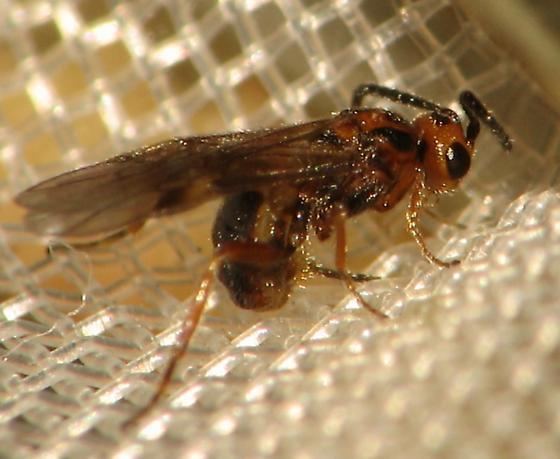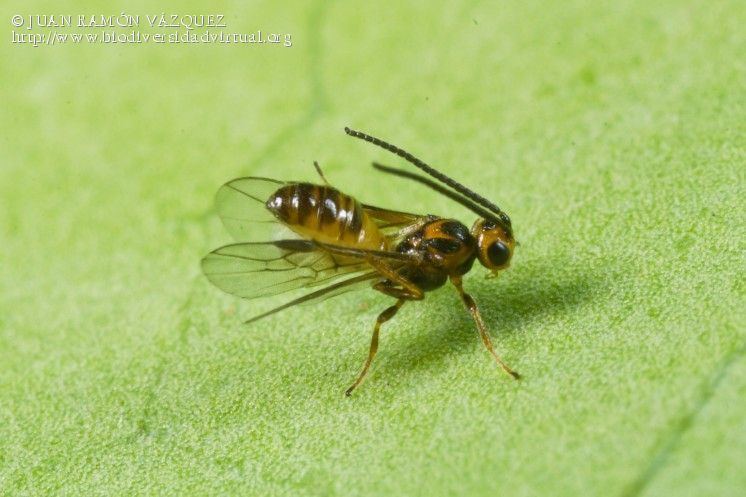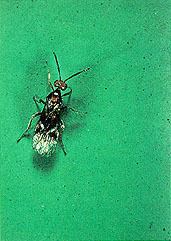Genus Habrobracon Higher classification Bracon | Scientific name Bracon hebetor Rank Species | |
 | ||
Similar Bracon, Insect, Braconidae, Hymenopterans, Ephestia | ||
Habrobracon hebetor s vs plodia interpunctella h caterpillar
Habrobracon hebetor is a minute Braconidae wasp that is an internal parasitoid to the caterpillar stage of Plodia interpunctella, the Indian meal moth, in the late larval stage of the Mediterranean flour moth and the almond moth.
Contents
- Habrobracon hebetor s vs plodia interpunctella h caterpillar
- Use in biological control
- Life cycle
- Radiation
- References

Use in biological control

The gut enzymes from the Habrobracon hebetor wasp quickly destroy the blood proteins in the moth larvae; thus it is an effective biocontrol agent.
Life cycle

At 30 °C (86 °F), the life cycle of the wasp is about ten to thirteen days from initial parasitism to final emergence of the adult. The adult female parasite lives about 23 days during which it produces about 100 eggs. It deposits 1 to 8 eggs in individual paralyzed late instar moth larvae.
Radiation

Habrobracon hebetor is remarkably resistant to radiation. While LD100 is estimated around 1000 rads for humans, and 56,128 rads (64,000 roentgens) for the fruit fly Drosophila melanogaster, a study showed that H. hebetor survived X-ray radiations of 158,080 rads (180,250 R). In this study, irradiated groups even had an increased life span compared to non-irradiated control groups. An effect attributed to the lack of activity of irradiated individuals. A similar effect has also been noticed in other insect species. However, female H. hebetor were sterilized at 4,210 rads (4,800 R) exposure. Another study showed that 218,373 rads (249,000 R) exposure instantly killed 100% H. hebetor.

